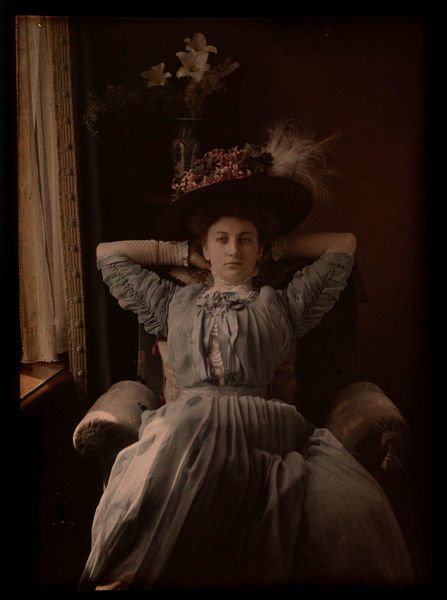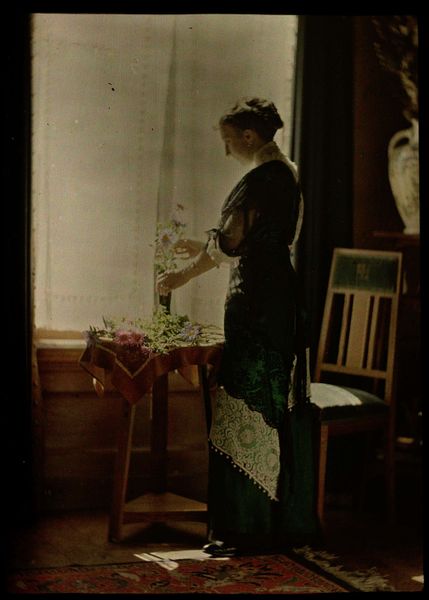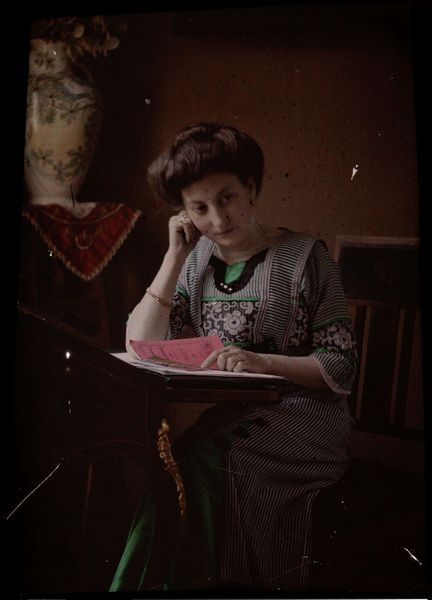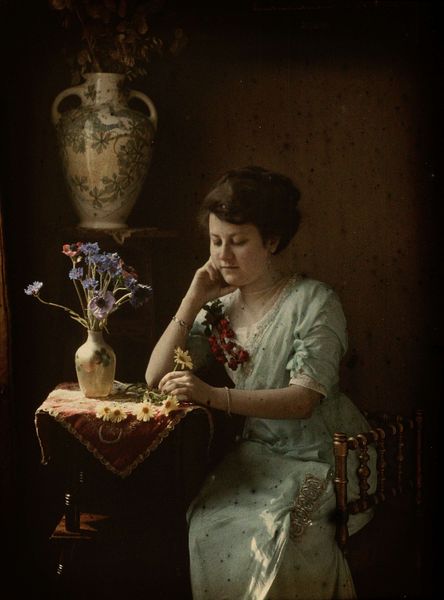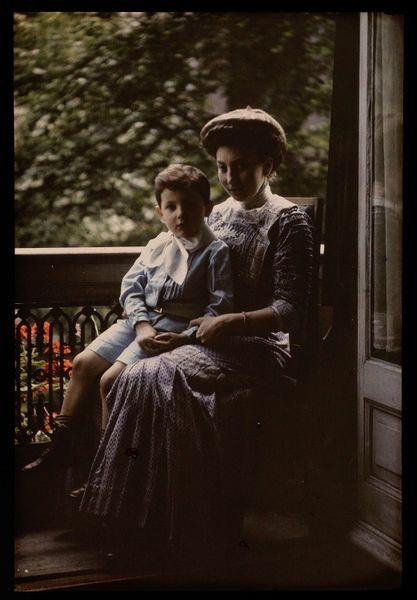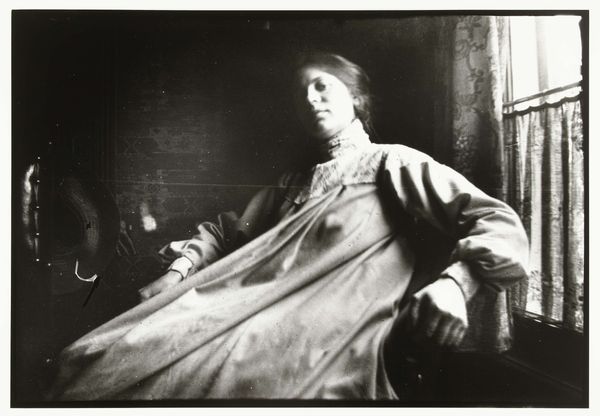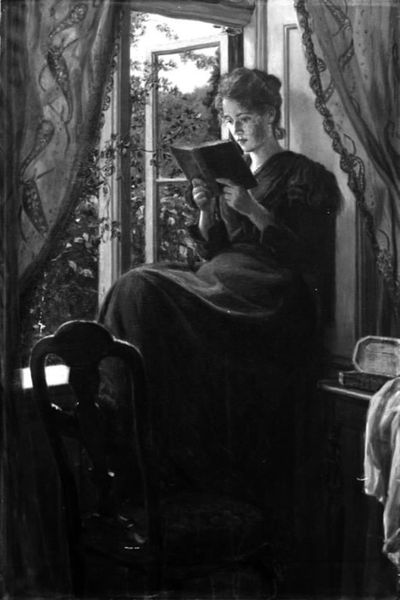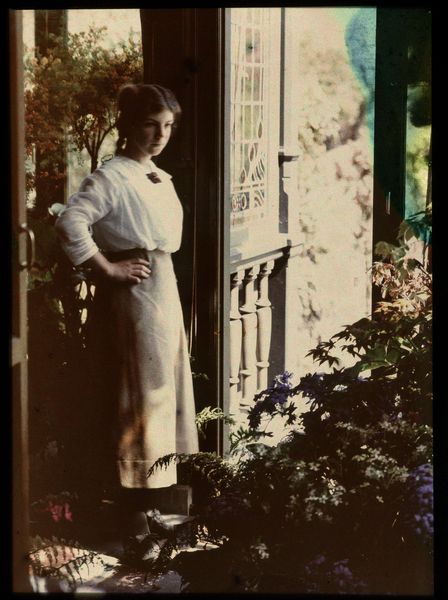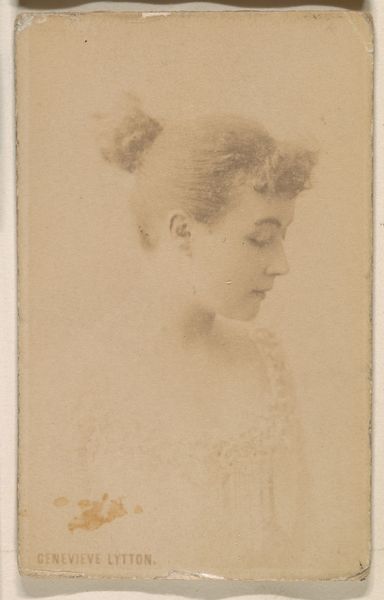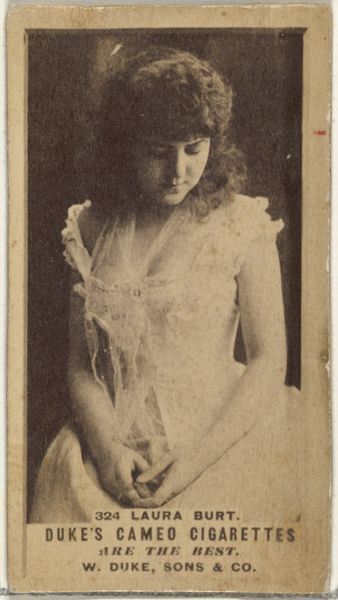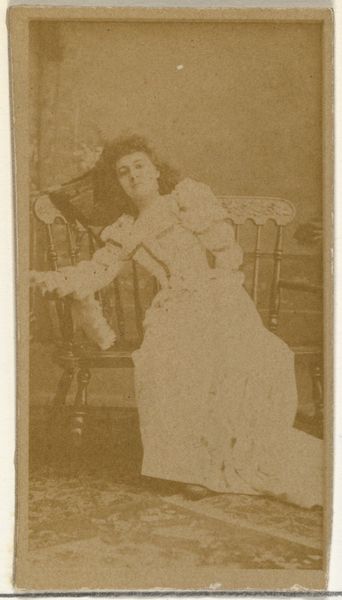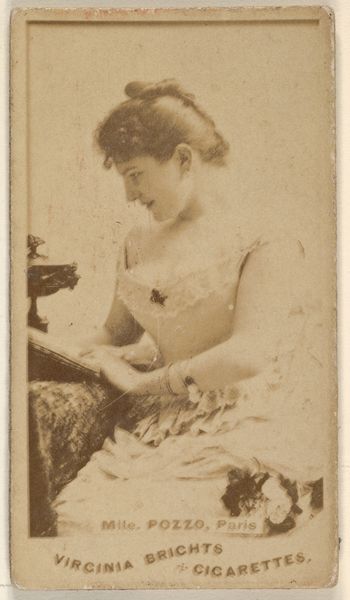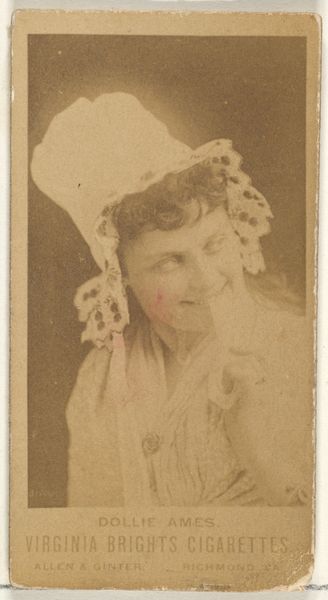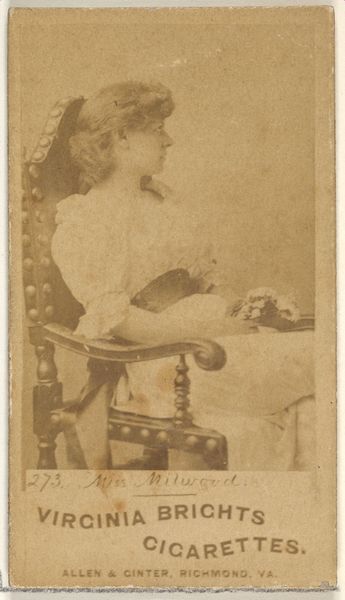
Dimensions: height 90 mm, width 120 mm
Copyright: Rijks Museum: Open Domain
Editor: This is Johannes Hendrikus Antonius Maria Lutz's "Vrouw zittend bij het raam," taken sometime between 1907 and 1916. It appears to be a photograph, perhaps on film. The woman in the image looks contemplative. How do you interpret this work, especially considering the historical context and the materials used? Curator: Looking at the materiality of this photograph—the presumed film and development processes available in the early 20th century—what does the image tell us about photographic labor at that time? The woman's clothing, her pose, all seem very carefully arranged, as were typical photographic portraits during that era. It feels meticulously constructed. The impression that is conveyed is a far remove from the speed with which we engage photography today. Editor: That’s a fascinating perspective. I hadn't considered the amount of labor involved. The pose does feel very deliberate. Was the production and consumption of images like this reserved for a particular social class given the resources and labor that was necessary for creating one? Curator: Precisely. It invites a materialist inquiry. This image encapsulates a specific social context – the subject, likely middle-class or upper-middle-class, could afford both the sitting and the final print. Her attire hints at social standing. So, consider the economics that underpin this 'genre-painting' depicted through photography and whose stories remain unseen or unrecorded through the process of its making. Editor: So, the image isn’t just about the woman but also a record of class and economic status made possible by the photographic process. Thank you. I’ll remember that when thinking about art from a materialist viewpoint. Curator: Yes, always consider the context of production and what labor and other economic circumstances make possible or preclude for different individuals or classes. This piece prompts us to think about whose stories were told, and how.
Comments
No comments
Be the first to comment and join the conversation on the ultimate creative platform.
